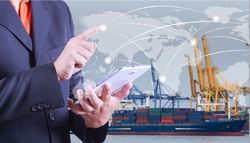The path to shipping's digital era will be walked with baby steps

Industry representatives at this week’s SHIPPINGInsight forum agree the industry will look to dip its toes into data analysis, digitalization and autonomous shipping through the adoption of limited, proven applications rather than a burst of innovations.
Though the technology is available, implementation will be piece by piece, with regulation to follow.
THE transition to shipping’s digital age, with promises of data-driven efficiency gains and unmanned vessels, will be driven by incremental implementation, with profitability as a prime concern.
A consensus was on display at this week’s SHIPPINGInsight forum. Ship owners and the companies offering the technology that will usher in the next era agreed the possible gains are exciting, but the transition will be long.
A group of panelists considering the timeline for the industry’s uptake of autonomous shipping gave a range from five years before the world sees 1,000 autonomous vessels in international waters, to up to 20 years before adoption levels are significant.
With decades-long vessel lifespans and slow-moving regulatory bodies, international shipping companies will not rush to integrate the newest technologies. Those decisions will be made only where the business case is convincing.
Understanding that thinking, technology suppliers are emphasizing proven, immediate returns.
“The purpose of digitalization is not really about digitalization, it is about getting value from the data,” Mogens Mathiesen, co-founder of software company Arundo Analytics, told Lloyd’s List. “You need to focus on the use case: where is the value?”
This means looking for simple, practical improvements as opposed to multi-year projects.
“When you start to digitalize, you don’t want to implement a huge project where you solve everything,” said Mr Mathiesen. “Try to get quick wins. Make something work and then iterate from it.”
For a data analysis firm, that means optimizing routes and equipment usage. Predictive maintenance, though the technology is there, will need to wait for changes to maritime regulation.
For autonomous shipping that means a focus on coastal areas with an emphasis on increasing efficiencies through auto-pilotage and docking and better routing, said Wärtsilä merchant and gas carrier segment sales general manager Kevin Humphreys.
The introduction of completely unmanned vessels remains a controversial topic. Panelists considering the transition to autonomous shipping warned against addressing it too directly too soon.
“I think small steps is the right way,” said Sperry Marine global business development director Jan Hansen. “We can start with remote assistance.”
“I can see already that in a few years we will have remote ships crossing rivers. On the other hand, in international waters it’s a big challenge.”